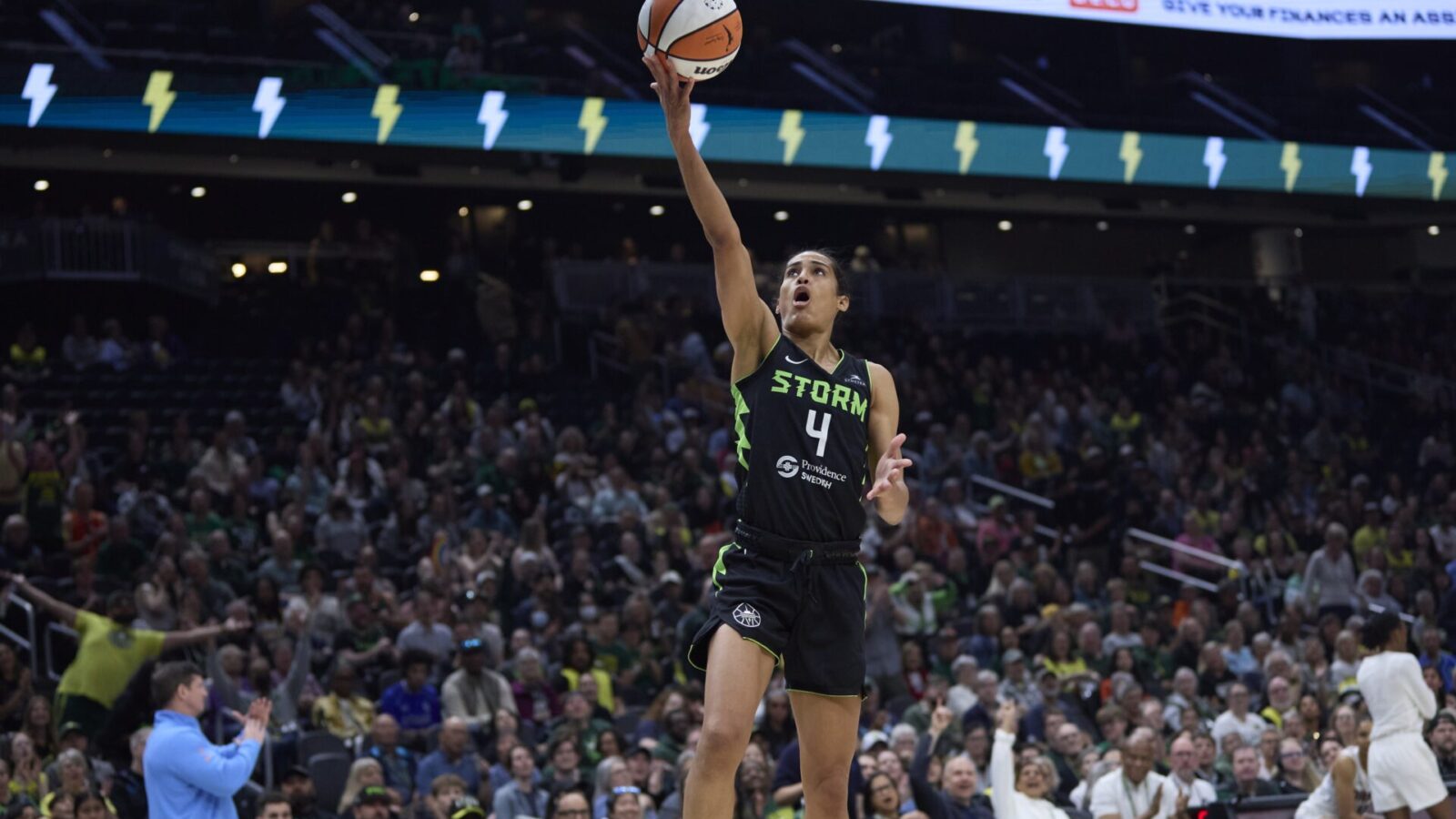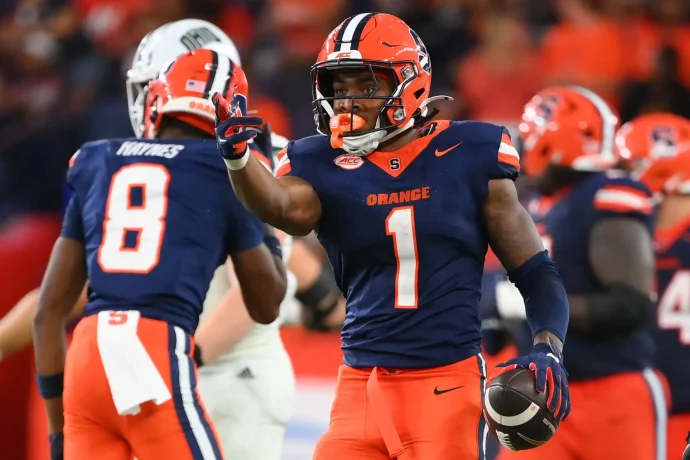Player props and DFS picks in the WNBA offer one of the most beatable areas in all of sports, so in this free article series, we’ll be breaking down the best WNBA props today.
While NBA props are subject to sharp numbers and massive volume, WNBA props often lag behind in pricing accuracy, especially early in the season and during weekday slates. The operators sometimes simply don’t dedicate the same algorithmic or human resources to these projections, which gives informed players a rare edge.
Best WNBA Props Today – Free Player Picks & Analysis
Looking for the top WNBA player props today? Our Props team breaks down their top WNBA prop picks every day throughout the season.
WNBA Player Props: Wednesday, July 16
Every day during the regular season and playoffs, we run through our favorite WNBA player props.
Skylar Diggins
Skylar Diggins is averaging 17.9 points, 5.8 assists, 2.3 rebounds and 1.1 steals in 32.6 minutes over 22 games this season. She hits 1.5 3-pointers per game in 3.9 attempts (40 percent).
Diggins had 10 points (4-of-14 FG, 0-of-1 3Pt, 2-of-2 FT), four assists and three rebounds over 35 minutes on Sunday’s 74-69 home loss against the Mystics.
The star guard is averaging 19.5 points, 4.5 assists, 2.5 rebounds and one steal in 33.6 minutes over two games against the Valkyries this season. She hits two 3-pointers per game in five attempts (40 percent).
Diggins plays with veteran poise and sharpness, excelling at manipulating defenders in the halfcourt and operating with calculated precision. Her offensive timing is elite, and she thrives at balancing scoring with facilitating duties. She’s highly effective in pick-and-roll situations and often takes advantage of even the smallest defensive breakdowns with quick-trigger decisions. Her confidence as a floor leader makes her a central piece regardless of opponent or setting.
Her weaknesses primarily stem from stretches of inefficient scoring when she’s forced to carry too much of the offensive load. When her shot selection skews toward contested midrange looks or forced drives, her impact dips.
She can also struggle defensively when tasked with bigger guards who leverage physicality in one-on-one situations, particularly off screens or deep in the shot clock.
However, as far as this game is concerned it should not be an issue. Diggins is projected to remain a dynamic lead guard presence against the Valkyries. Expect her to dictate pace, create quality looks out of ball screens, and stretch the floor with timely perimeter shooting.
Pick: Skyler Diggins > 21.5 points + assists
Paige Bueckers
Paige Bueckers is averaging 18.3 points, 5.4 assists, 4.1 rebounds and 1.7 steals in 34.7 minutes over 17 games this season. She hits 1.1 3-pointers per game in 3.3 attempts (33.9 percent).
Bueckers had 21 points (9-of-15 FG, 2-of-4 3Pt, 1-of-3 FT) with four assists, four rebounds and two steals across 33 minutes on Sunday’s 103-82 road loss against the Fever. It was the first head-to-head battle between Bueckers and Caitlin Clark, and the 2025 WNBA Draft No. 1 overall pick did her part, shooting the ball well while turning it over just four times.
The rookie phenom had 16 points, five assists, two rebounds and two steals across 38 minutes in an 88-84 road loss against the Aces on June 13. She was 7-of-19 from the field and 0-of-2 from 3-point range.
Bueckers is a composed and creative floor general with a natural feel for timing and pace. She excels at finding teammates in motion, breaking down defenses with her dribble and finishing with finesse from multiple angles. Her ability to read coverages and react with instinctual precision gives her offense versatility, especially in tight games. Off the ball, she remains engaged and constantly positions herself to strike when defenders relax.
Her primary limitations stem from streaky shooting stretches and physical matchups against longer, more aggressive defenders. When her jumper isn’t falling early, it can disrupt her rhythm for entire quarters.
That said, Bueckers is projected to remain a balanced offensive engine and key facilitator against the Aces. Expect her to drive tempo, create efficient looks, and offer steady scoring despite perimeter pressure.
Pick: Paige Bueckers > 22.5 points + assists
Best WNBA Player Props Tips: What To Know
Before diving into numbers, you need to understand how the WNBA’s format and roster structure impact props. Fewer teams, a shorter season, and heavier reliance on starters all shape how props are set—and how you should attack them.
- 13 teams, 44 games per season (in 2025): Smaller sample sizes make trends easier to spot but also demand quick adaptation.
- Star-dominant rotations: Unlike the NBA’s frequent load management, WNBA stars often play heavy minutes—35+ MPG is normal for top-tier players.
- Condensed rotations: Most teams use 7–8 players consistently. That means injury news creates bigger swings in usage rates and prop outcomes than in deeper leagues.
- Fewer back-to-backs: Game scheduling allows stars to play more regularly without rest days, which boosts reliability when betting overs.
Key Stats to Track for Successful WNBA Betting
Raw stat averages won’t give you the full edge. To consistently beat prop lines, you need to understand not just what a player produces—but how, why, and against whom. These are the core metrics that actually matter in 2025 WNBA betting.
Usage Percentage
This is your cornerstone stat for scoring props. Players with high usage dominate possessions, touch the ball frequently, and are the first scoring option. In 2024, Kahleah Copper, A’ja Wilson, and Chennedy Carter led the league in usage percentage.
Tip: Compare usage percentage with minutes per game. A player with a 31.1% usage rate playing 32.4 minutes (like Kahleah Copper in 2024) is far more likely to cash a scoring prop than someone with similar usage but fewer minutes.
Rebounds Per Game and Opponent FG%
With no access to rebound chances or rebounding rate data in the WNBA, your best angles are actual rebounds per game, opponent field goal percentage, and team rebounding volume.
- Angel Reese led the league with 13.1 RPG in 2024.
- A’ja Wilson ranked second with 11.9 RPG.
- Chicago Sky and New York Liberty led the league in team rebounding with 36.6 RPG.
Low opponent FG% creates more missed shots, which means more rebound chances. That gives rebound props value when a strong rebounder faces an inefficient offense.
Assists Per Game and Ball-Handling Role
Actual assist numbers and role clarity offer plenty of betting value.
- Caitlin Clark led the league with 8.4 assists per game last season.
- Alyssa Thomas (7.9 APG) and Natasha Cloud (6.9 APG) followed close behind.
- Sabrina Ionescu rounded out the top five with 6.2 APG.
Look for high-assist players who dominate possessions and initiate plays. You can also gain value by fading secondary ballhandlers in games where usage is shared.
Team and Opponent Pace
More possessions = more opportunities for points, rebounds, assists, and made threes. Pace stats tell you how many trips up the court teams average per 40 minutes.
Target overs in games involving teams like the Las Vegas Aces, Los Angeles Sparks, and Seattle Storm, all of which played at a top-five pace in 2024. Slower matchups (like Minnesota vs. Atlanta or Connecticut) are better for unders on volume stats.
Opponent Positional Matchups
Some teams are consistently bad against specific positions. For example:
- Guards feasted against the Indiana Fever backcourt in 2024.
- Bigs routinely put up strong rebounding and scoring numbers against Dallas and Phoenix.
Use recent box scores, player logs, and betting performance histories to identify teams that allow strong production from players in certain positions.
Timing Matters: When to Bet WNBA Props
Prop betting isn’t just about what you bet—it’s when you bet it. Knowing the optimal windows for attacking the market can be the difference between grabbing a soft line and chasing a stale number.
Opening Lines (Early Value)
Books often release WNBA props the morning of a game. That’s when the lines are softest. Jump on overs for role players stepping into new minutes before news gets baked into the line.
After Injury News Impacts
WNBA depth charts are shallow. If a starter is ruled out, the ripple effects are immediate and measurable. The sixth player suddenly becomes the second scoring option, and books are often slow to adjust.
Example: If Sabrina Ionescu is ruled out for the Liberty, Natasha Cloud and Marine Johannes both see significant upticks in usage and assist opportunities.
Late Market Steam (Fade or Follow Carefully)
Once a line moves significantly—say, a points line jumps from 14.5 to 16.5—be cautious. Don’t chase steam blindly. Sometimes you’re better off passing than betting into a line that’s lost its edge.
WNBA Prop Types and Strategy By Category
Each stat category behaves differently in the WNBA. Understanding how to approach each type of prop lets you build a sharper and more efficient betting card.
Points Props
Most straightforward, but often inflated for stars. Look for inefficiencies in mid-tier players with increased roles or favorable matchups.
- Target high-usage, high-minute players in pace-up matchups.
- Bet overs for players facing poor perimeter or interior defenses.
- Unders are valuable when a player’s role shrinks due to rotation changes or tough matchups (e.g., facing Breanna Stewart or Ezi Magbegor inside).
Rebounds Props
Look beyond averages. Use:
- Opponent FG%
- Shot volume
- Low shooting percentages = more rebound chances.
Assists Props
Unlike the NBA, WNBA assist tracking is limited — but assist props are still beatable if you focus on who actually handles the ball and creates offense. Use:
- Assists Per Game – In 2024, Caitlin Clark (8.4), Alyssa Thomas (7.9), and Natasha Cloud (6.9) led the league. These are primary facilitators playing heavy minutes.
- Minutes + Role – Look for players who run the offense and stay on the floor 30+ minutes per night. For example, Alyssa Thomas initiates most of Connecticut’s offense despite being a forward. (She is now with the Mercury and will likely do the same).
- Game Pace and Matchup – Fast-paced matchups (like vs. Indiana or Vegas) lead to more possessions and assist chances. Also look for teams with weak on-ball defense that allow a high number of assists.
- Recent Trends – Did a player just shift to a new lineup spot (e.g., starting PG due to injury)? That usage jump might not be baked into the lines yet.
3-Pointers Made Props
Only a few players consistently attempt 6+ 3-pointers per game. Look for:
- Teams Opponent Shooting Percentage
- Matchups where defenders sag off
- Players who get extended run due to blowouts or injury absences
Situational Angles For WNBA
Sometimes it’s not just stats that tell the story—certain matchups, emotional edges, or game formats can produce unique betting opportunities.
Blowout Games
In lopsided spreads (10+ points), starters might sit early in the fourth. Look to fade points props for stars and take overs for bench players whose minutes spike in garbage time.
Revenge or Narrative Games
WNBA players, like their NBA peers, rise to the occasion in certain matchups. If a player is returning to face a former team or rival, motivation may lead to increased usage and shot attempts.
Second Leg of Home-and-Home
When teams play each other twice in a row, adjustments are key. Defensive schemes tighten, and scoring often drops. Consider unders on volume shooters or assist props if passing lanes get clogged.
Bankroll Strategy for WNBA Props
Your betting edge means nothing without discipline. If you don’t manage your units, variance will catch up no matter how sharp your picks are.
- Flat betting: Bet the same unit size on each prop to avoid volatility.
- Limit overs: Don’t blindly bet overs just because it’s fun. The best value is often in unders that the public avoids.
- Track CLV (closing line value): If you consistently beat the closing number, you’re on the right path—even if the early results are volatile.
Betting on WNBA props is all about information, timing, and niche awareness. You’re not trying to outsmart the sharpest NBA lines—you’re navigating a market that often reacts slower and offers more value to those who dig deep.
If you learn how to interpret advanced metrics, follow team-specific trends, monitor injury impact, and apply strict bankroll discipline, WNBA props can become a profitable long-term betting angle—especially during the summer when many bettors shift their attention elsewhere.







